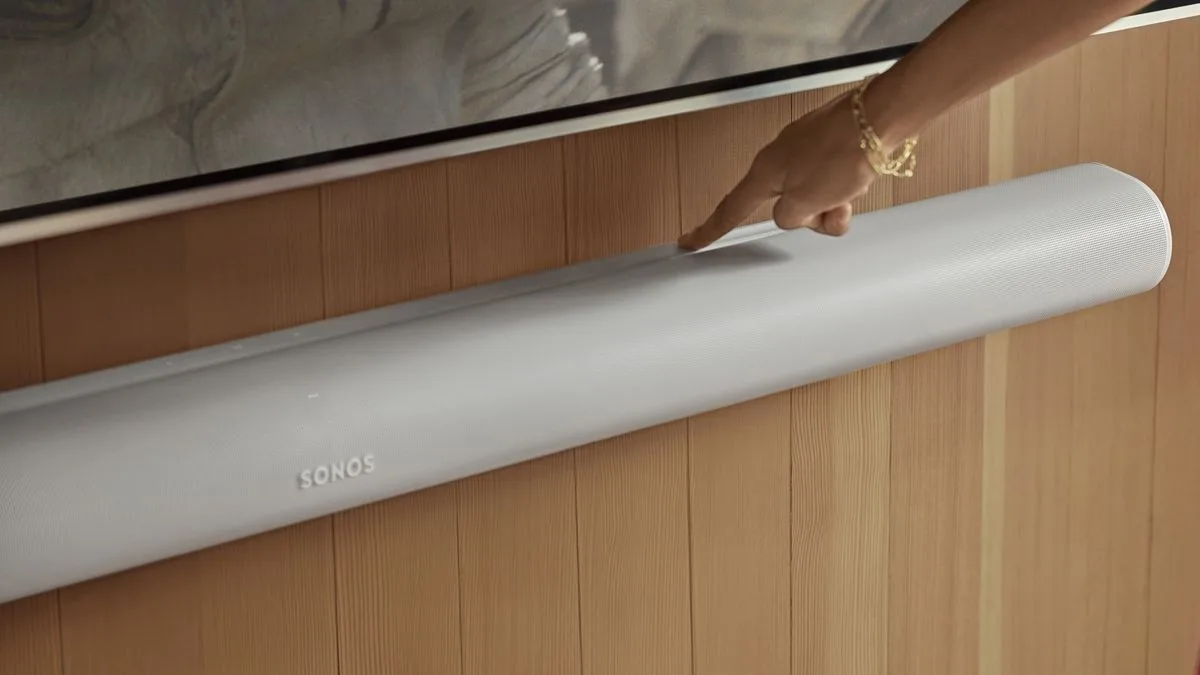Hisense announces a Dolby Atmos wireless speaker system 4.1.2 channels with Dolby Atmos and DTS:X support Similar concept to the Sony Bravia Quad Hisense has officially revealed the HT Saturn, a new speaker system to join its range of soundbars. Set for release in 2025, there is currently no specific release date or pricing info […]
Soundbars
Auto Added by WPeMatico

Sonos’ best-ever Black Friday deals for its soundbars mean I’ll finally upgrade to the Sonos Arc
Sonos makes some of the best soundbars on the market, and most of them are heavily discounted for Black Friday. Whether you’re looking for the Sonos Arc or the smaller Beam 2, you’ll find the lowest-ever prices for these standout soundbars. In fact, these Black Friday deals are so good that I’m tempted to upgrade […]
I’m a home theater obsessive, and these are the Black Friday soundbar deals I recommend
Refresh 2024-11-23T21:54:04.558Z (Image credit: Amazon) The most common connection for high-quality soundbars today is HDMI ARC or HDMI eARC. This means they connect to your TV over an HDMI port, and take all your TV’s sound over this connection. What are the advantages and what are the differences between them? We have a guide to […]
The new Sonos Arc Ultra soundbar sounds fantastic, but I’m far more impressed by its smart features
When the Sonos Arc Ultra soundbar and Sub 4 were finally unveiled, all eyes (or should that be, ears?) were focused on whether they sounded better than their predecessors, and by how much. As our full Sonos Arc Ultra review reveals, it’s “the best one-box Dolby Atmos soundbar for the price.” It’s not without its […]
Panasonic SC-HTB100 review: experience clearer vocals without breaking the bank
The Panasonic SC-HTB100 is a no-nonsense, easy-to-use budget soundbar that offers a solid upgrade on typical TV audio. It’s a full-sized standalone soundbar available for as little as £79 (about $100 / AU$160) – placing it firmly in the super-cheap category. As a result, you can’t expect mind-blowing spatial audio or game-changing features – but […]
Vizio’s new Dolby Atmos soundbar is also a karaoke machine, because why not
Vizio has announced a new soundbar that doubles as a karaoke machine, offering singalong fanatics a sound system, two microphones, and access to 80,000 songs in a sleek and affordable package. The Vizio MicMe will ship with two wireless dynamic microphones that automatically activate the soundbar’s custom karaoke mode when removed from the included charging […]

Some people got Sonos Arc Ultra early – here’s what they think of the next-gen soundbar
It’s nice to be reporting some good news about Sonos: if the early user opinions of the new Sonos Arc Ultra soundbar are representative, it looks like the firm has a hit on its hands. A number of customers have had their Ultras delivered early, and naturally they’ve turned to the Sonos subreddit and to […]
Looking to upgrade your Halloween movie marathon? Here are 3 soundbars sure to give you an extra scare
Spooky season is well and truly here and we’re mere days away from Halloween, which means there’s pumpkins, trick-or-treaters and costumes galore already around. With Halloween also comes a chance to break out your favorite horror for their annual re-watch. Now, you’ve got one of the best horror movies lined up to watch and one […]

Sonos confirms some missing details about Arc Ultra – and says its app now has 90% of its missing features back
When Sonos unveiled the Sonos Arc Ultra soundbar earlier this week, we had a few questions. And now we have the answers. In particular, we’ve confirmation about the Arc Ultra’s Dolby Atmos channels, its current stance on DTS, and its HDMI ports – and we’ve had an update on the status of the app. The […]

Sonos’ Arc Ultra soundbar is official, with revolutionary new speaker tech that offers ‘double the bass’
The Sonos Arc Ultra is official, and it’s launching on October 29, 2024, at a price of $999 / £999 / AU$1,799. It’s a massive upgrade over the existing Sonos Arc, and introduces a brand-new speaker technology that promises to deliver incredible immersion which looks set to rival the best soundbars.Here’s what you need to […]
